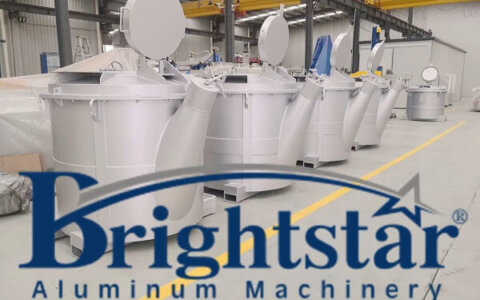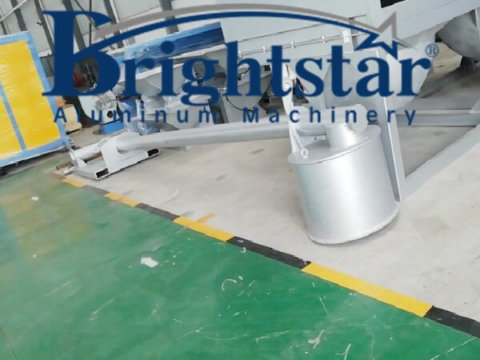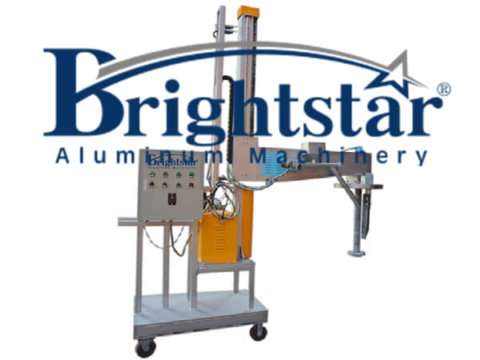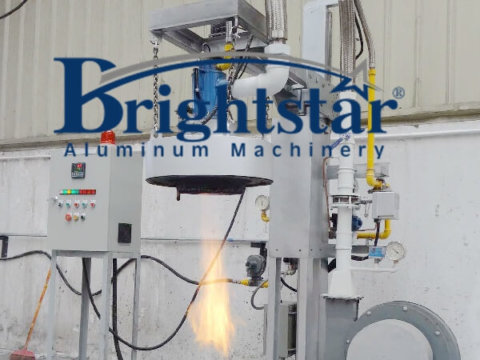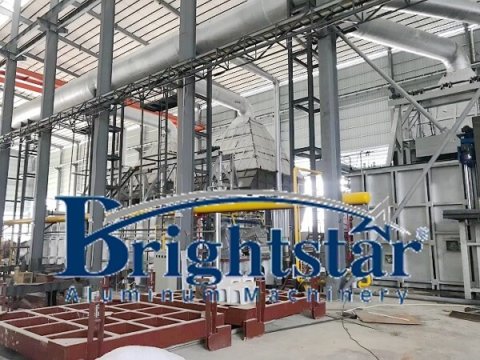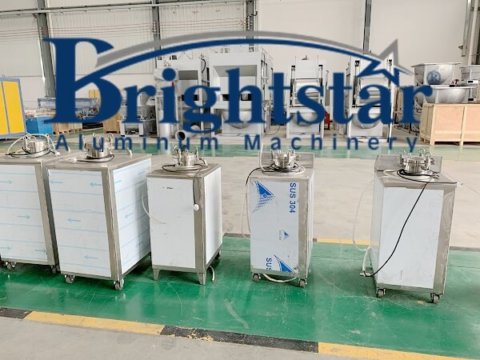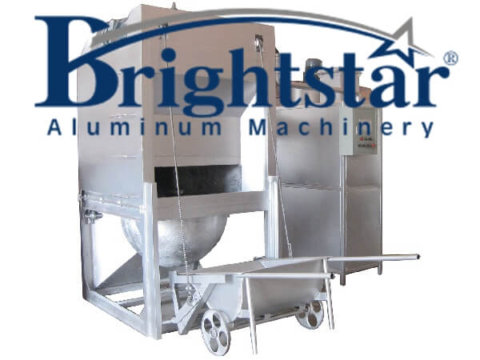
Molten aluminium transfer ladle
Molten aluminium transfer ladle
A Molten Aluminum Transfer Ladle is a critical tool in the aluminum industry, responsible for the safe and efficient movement of molten aluminum between furnaces, holding vessels, and casting machines.
These robust vessels come in various shapes and sizes, playing a crucial role in ensuring smooth production flow and minimizing risks associated with high-temperature metal handling.
The safety of the molten metal transfer ladle is essential and this transfer ladle machine is made according to machinery industry standard JB5550-91 ladle technical specification.
Our company has excellent technology and rich experience in the machine, which can guarantee the best quality for the molten aluminum transfer ladle.
Transferring molten metal is a procedure of prime concern in melting, refining and casting workshops.
Lip pouring from ladles results in cascading metal and leads to dross formation. Transferring metal long distances need to be considered the temperature losses.
Brightstar aluminum machinery offers customers a better solution and variety in the molten metal transfer ladle.
Function:
Molten Metal Containment: The ladle securely holds molten aluminum at scorching temperatures, often exceeding 650°C, preventing spills and ensuring safe transfer.
Transport and Pouring: Robust design and handling mechanisms allow the ladle to be transported, tilted, and precisely poured into various receptacles depending on the downstream process.
Temperature Retention: Equipped with insulating materials, the ladle minimizes heat loss and maintains the molten aluminum’s desired temperature during transfer.
Key Features:
Refractory lining: This inner lining, typically made of ceramic or firebrick, withstands the extreme temperatures of molten aluminum and protects the ladle’s outer shell.
Durable exterior: Constructed from robust materials like steel or cast iron, the ladle must be sturdy enough to handle the weight and heat of the molten metal.
Pouring spout: Designed for controlled and precise pouring, the spout minimizes drips and splashes, optimizing metal transfer and improving safety.
Lid (optional): Some ladles come equipped with a lid to minimize heat loss, prevent oxidation, and protect against accidental contamination.
Lifting equipment: Ladles utilize various lifting mechanisms, such as yokes, hooks, or forklifts, for safe and efficient movement.
Advantages:
Efficient metal transfer: Facilitates fast and smooth movement of molten aluminum between equipment, optimizing production flow.
Improved safety: Reduces the risk of spills and accidents associated with handling high-temperature metals.
Temperature control: Minimizes heat loss during transfer, maintaining the desirable temperature for downstream processes like casting.
Versatility: Available in various sizes and configurations to cater to different production volumes and pouring requirements.
Flexibility: Compatible with various furnace and casting equipment for seamless integration into existing workflows.
Applications:
Aluminum foundries: Transferring molten aluminum between furnaces, holding vessels, and casting machines during casting processes.
Secondary aluminum production: Moving liquid aluminum during recycling and remelting operations.
Alloying and blending: Mixing different aluminum alloys to achieve desired properties.
Metal refining: Transporting molten aluminum through various refining stages.
Suitable for molten metal transfer ladle from melting factory to the casting factory, for the molten aluminum transfer, can be refined and degassing process in it.
Molten metal transfer ladle part
A molten aluminium transfer ladle is made up of a ladle shell, ladle liner, ladle arm (or forklift base) and ladle cover (optional)
Tailor-made molten metal transfer ladle
Transfer ladle cover (no, fixed or moveable), transfer ladle lip( teapot or duckbill), transfer ladle lip number(single or double), an insulation layer( no, single or double), transfer ladle capacity(150-10000kgs), transfer ladle transfer way( crane or forklift or both), ladle tilting( manual, motor or forklift)
Molten metal transfer ladle type
It can be suspended type molten metal transfer ladle, forklift type molten metal transfer ladle, Suspended type and forklift type molten metal transfer ladle, tea-pot type molten metal transfer ladle
Our Molten metal transfer ladle highlights
☆The good heat-insulating property, slight natural temperature drop. Equipped with a thicker insulating layer. The outside insulating layer adopts light heat insulation castable or nanometer fiber materials, good for heat preservation.
☆Good non-stick aluminum property. The liner uses America Allied Minerals or UK Morgan aluminum transfer ladle special refractory castable for the whole casting. Week soakage with molten aluminum and resistant to corrosion
☆ Resistance for the hot and cold shock. High strength special inner layer liner, can be resistant for the frequency hot and cold alternating shock, anti-stripping
☆ Sturdy ladle shell. The ladle shell is made according to transfer ladle technical specification, welded for the bottom hoop, waist hoop, upper edge hoop and weld reinforcement, which can not only extent the using life, but also guarantee the safety
☆ Long using life. Professional design and make, good materials, keep the machine for long using life
Overall, the Molten Aluminum Transfer Ladle is an indispensable tool in the aluminum industry.
Its ability to safely, efficiently, and precisely handle molten metal makes it a crucial element in various production and recycling processes.
From ensuring smooth flow to minimizing risks, the trusty ladle plays a vital role in the journey from molten aluminum to final products.
More benefits of molten aluminium direct supply
Direct supply of molten aluminium has more benefits, saving more than 100.00USD per ton
The direct supply of aluminum liquid is in the state of “aluminum water” from molten aluminium suppliers, instead of the traditional “aluminum ingot” supply to the cast aluminum factories.
The casting party can obtain huge economic and social benefits by eliminating the secondary melting process;
The molten aluminum supplier factories side can also gain a share of the economic benefits while achieving an extremely stable sales market.
The casting factories have huge revenue from “Direct supply of molten aluminium”
1. Save energy costs.
Aluminum ingots melting need to consume about 80-90 cubic meters of natural gas per ton;
2. Reduce metal melting loss.
The melting causes 2-3% metal burning loss;
3. Save the infrastructure and equipment investment.
Secondary smelting requires investment in plants, smelting furnaces, dust removal equipment, etc.;
4. Save workers’ salaries.
Secondary smelting needs to be equipped with smelting process operators and management team;
5. The on-site environment has been improved to enhance corporate identity.
Eliminate secondary smelting to reduce exhaust and heat emissions;
6. Stabilize casting quality.
Since the “aluminum liquid” supplier is a well-known company in the industry, it has perfect quality control ways, which adopts the electromagnetic stirring technology at the bottom of the furnace to improve the uniformity and consistency of the material, and the internal quality is guaranteed, so it is the good foundation for casting quality control;
7. Achieved zero inventory and reduced capital occupation;
8. Scraps and aluminum chips can be directly replaced with aluminum liquid from the molten aluminium factory, no need to store and melt.
The molten aluminum factory also benefits from the “direct supply of aluminum liquid”
1. Saving the process of casting the aluminum liquid into an aluminum ingot and the heat energy consumption in the process;
2. The aluminum liquid supplier can get a part of the huge benefits obtained from the “aluminum direct supply” casting, and at the same time better stabilize the sales market;
3. The scrap parts and aluminium chips from casting factories will be the melting raw materials for aluminium liquid supplier factory;
Because of the huge cost advantage and social benefit of a “direct supply of aluminum liquid”, both parties can achieve a win-win situation.
At present, more and more casting companies and aluminum liquid supply companies adopt the “aluminum liquid direct supply” type, which is stable and close cooperation and benefit-sharing for both parties.
The necessity of molten aluminium transfer ladle in aluminium liquid direct supply
In the context of aluminum liquid direct supply, where molten aluminum is transported directly from suppliers to casting factories instead of relying on traditional aluminum ingots, the necessity of Molten Aluminum Transfer Ladles depends on several factors:
Reasons for necessity:
Large-scale transport: If the volume of molten aluminum being transported is significant, ladles offer a safe and efficient method compared to smaller containers or pumps. Their large capacity reduces the number of trips needed, optimizing logistics and minimizing transport time.
Maintaining temperature: Ladles with proper insulation help maintain the molten aluminum’s desired temperature during transport, ensuring optimal fluidity and quality for downstream casting processes. This becomes particularly crucial for longer transportation distances.
Flexibility and compatibility: Ladles can be designed to fit various furnace and casting equipment configurations, providing flexibility in setting up direct supply operations. Compatibility with existing infrastructure in both supplier and casting facilities reduces the need for significant equipment upgrades.
Safety and risk management: Ladles equipped with safety features like lids and controlled pouring mechanisms minimize the risk of spills and burns, ensuring a safer working environment for personnel involved in handling molten aluminum.
However, factors might favor alternative methods:
Smaller volumes: For smaller quantities of molten aluminum, alternative transport methods like insulated containers or pumps might be more cost-effective and efficient.
Short distances: If the supplier and casting facility are located close together, the time saved by using ladles might not outweigh the additional costs and infrastructure requirements.
Investment and operating costs: Ladles, especially large ones, involve an initial investment and ongoing maintenance costs. These need to be weighed against the expected benefits and potential cost savings from improved efficiency and temperature control.
Overall, while not universally essential, Molten Aluminum Transfer Ladles can play a valuable role in large-scale, temperature-sensitive, and flexible aluminum liquid direct supply operations.
Carefully evaluating the volume, distance, existing infrastructure, and cost factors will help determine if ladles are the optimal solution for your specific needs.
Additional considerations:
Regulations and safety standards: Ensure the chosen ladles comply with relevant safety regulations and industry standards for handling molten aluminum.
Operator training: Proper training for personnel handling molten aluminum ladles is crucial for safe and efficient operation.
Maintenance and inspection: Regular maintenance and safety inspections of the ladles are essential to ensure their continued functionality and prevent potential accidents.
